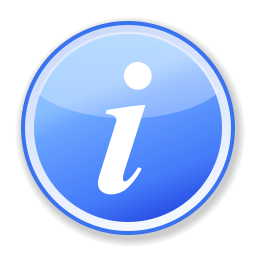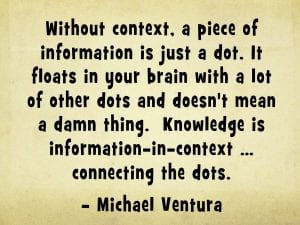The concept of information is much more complex than one may initially think. Certainly after reading through Module 2.1: Definitions of Information, I have a better understanding of this. When posed with the question “what is information” I may have previously overlooked the classic definition of information as objective data and skipped straight to a more semantic opinion of information as transferable knowledge that conveys meaning and understanding. I may have then snuck a look at a dictionary definition along the lines of what the Oxford Dictionary or Macmillan Dictionary defines, although, these definitions mention facts, of which I would argue that perhaps information doesn’t need to be factual in order to simply exist as information. I suppose this would lead to the category of misinformation. In any case, I had not thought much on the idea that information may be defined as semantic and classic and the differences between these categories.
I am a visual learner and often if I can’t see something visually I will usually try to come up with an analogy or metaphor for my understanding, particularly with new information. And so it was after reading this section that I found myself gazing at my bookshelf, pondering these new concepts and trying to come up with a way I could apply them. Thus, to explain my understanding of the differences between semantic and classic information I use the example of a bookshelf. If you added up the number of pages in each book on a shelf, then the resulting number (data) would fall into the category of the classic definition of information ( I have X number of pages of information). However, if you read the content of the the books then the meaning and understanding that you gained about a number of issues or topics within those books would fall into the semantic category of information – (hopefully I got that correct?).
The other thing I took away from 2.1 of this module is the data-knowledge continuum and how these definitions can come together to explain how information is used, from chaos> data>information>[understanding]>knowledge>wisdom. I find this particularly useful when considering how students may receive and use information. I believe that we would all love our students to be using the information they receive at the level of wisdom. Knowing how they may work and use information at the different levels of the data-knowledge continuum may go a long way to being able to guide them through their use of information both during and after they have done their research.
Additionally, I liked the inclusion on the attributes of information and information as an intangible commodity that can be created, manipulated and multiplied, and I think this is important for teachers to understand, and to help our students understand this. We all live in an information society in which we have unprecedented access to an ever increasing amount of information and given the expansive nature of this information that we have access to and the way that information is handled, the question of authenticity and value must be considered. To be able to sift through what is suitable information for an appropriate use and differentiate between reputable sources of information is a life-long skill that we should be encouraging students in all faculties to practice. The uniqueness of information, that it has inconsumable, untransferable, indivisible and accumulative attributes, along with the increasing ability to produce information in the digital age makes it a commodity that continues to rise. How do we decipher ‘good’ or useful information? How do we use that information and pass on or express that information? What format is the most appropriate to disseminate and receive this information? These have become increasingly important questions.



Leave a Reply